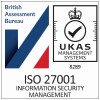Testing times are not the time to test your claims handling. Cleaning up Storm Eunice will take months and every home insurer will face the Catch 22 that comes with mass notifications, mass customer needs and systems not configured to cope. It’s the kind of catastrophe event that can uproot customer service while ripping the lid off indemnity costs.
How can insurers configure their way past the sting jet? There is a way and it is one that 360Globalnet has put into place in multiple US events when it was a near certainty that a storm would make landfall. The three keys are: pre-notification actions, online triaging and systems with the agility to adapt in real time. The Met Office did well in predicting Eunice but this still gave only a few days notice. And if your claims handling system is rigid and hard-coded, often the only scenario left in the deck is to throw more staff at the problem. Staff who themselves may have been advised to stay at home or be suffering their own claims. It’s a scenario that blow holes in the armour of stubborn claims management solutions… but one where modern configurable systems fill their sails and gather speed.
So, take an insurer like this. Let’s call it This Insurer. What did they do?
This Insurer knew which customers who would likely be hit so they segmented them and emailed every single one with preventative information and asked them to take photos of any parts of their property that might be hit by a windstorm. Garden buildings, roofs, fences and the like. They assured everyone that this would enable the fastest response in the event of a claim being needed. It also helped save time, fraud and speed up settlement.
This Insurer spent two days configuring bespoke Eunice claims processes adjusting all processes to accommodate abnormal volumes. They helped drive 80% of claims online, automatically triaging classes and extents of damage into the right routes to suit the circumstances. Their policyholders reported claims digitally across all channels and — in the worst cases — launched live streaming direct from the desktop to see the damage in real-time. Where physical site visits were required, they used an immediately scalable network of on-demand workers to visit customers.
For claims registered online, triage was automatic in 75% of cases due to comprehensive rule sets that enabled them to direct every claim the best way. Low value claimants were asked for photo evidence that was checked automatically and channelled for straight-through payment. With automatic notifications at every stage of course.
More complex claims saw supply chains and loss adjusters automatically engaged into the same online system so every piece of action and evidence came through one co-ordinated channel, visible in aggregate or one-by-one.
It sounds too good to be true. But, it is true. It is possible and it is available.
At 360Globalnet, our technology is based on no-code configuration. You design the processes and build them - including complex rules and every digital extra direct from the desktop.
We are the multi-award-winning no-code digital claims management platform. This week we have seen hundreds of thousands left without power but insurers hold the power to transition to end-to-end digital claims and transform the service delivery all year round, regardless of the weather. They just need to make sure their vision is strong, directed and high impact. Like Eunice.
If you’d like to find out more about why surge specialists in the USA and Australia are turning to 360Globalnet and no-code digital claims technology, get in touch today.
